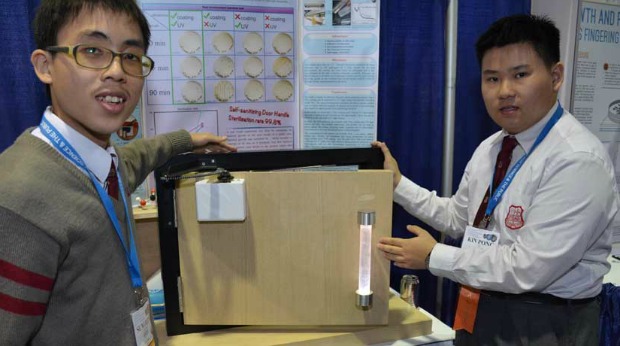
Breaking News
 Tether claims billions in profits as it grows 'secured loans'
Tether claims billions in profits as it grows 'secured loans'
 DC PANICS as Pam Bondi's Grand Jury CHANGES EVERYTHING!
DC PANICS as Pam Bondi's Grand Jury CHANGES EVERYTHING!
 Sydney Sweeney Ad Outrage & MAGA Memes: DNC Bankruptcy, Deep State Exposed! Trump 2025
Sydney Sweeney Ad Outrage & MAGA Memes: DNC Bankruptcy, Deep State Exposed! Trump 2025
Top Tech News
 3D printing set to slash nuclear plant build times & costs
3D printing set to slash nuclear plant build times & costs
 You can design the wheels for NASA's next moon vehicle with the 'Rock and Roll Challenge
You can design the wheels for NASA's next moon vehicle with the 'Rock and Roll Challenge
 'Robot skin' beats human reflexes, transforms grip with fabric-powered touch
'Robot skin' beats human reflexes, transforms grip with fabric-powered touch
 World's first nuclear fusion plant being built in US to power Microsoft data centers
World's first nuclear fusion plant being built in US to power Microsoft data centers
 The mitochondria are more than just the "powerhouse of the cell" – they initiate immune...
The mitochondria are more than just the "powerhouse of the cell" – they initiate immune...
 Historic Aviation Engine Advance to Unlock Hypersonic Mach 10 Planes
Historic Aviation Engine Advance to Unlock Hypersonic Mach 10 Planes
 OpenAI CEO Sam Altman Pitches Eyeball-Scanning World ID to Bankers
OpenAI CEO Sam Altman Pitches Eyeball-Scanning World ID to Bankers
 New 3D-printed titanium alloy is stronger and cheaper than ever before
New 3D-printed titanium alloy is stronger and cheaper than ever before
 What is Unitree's new $6,000 humanoid robot good for?
What is Unitree's new $6,000 humanoid robot good for?
 "No CGI, No AI, Pure Engineering": Watch Raw Footage Of 'Star Wars'-Style Speeder
"No CGI, No AI, Pure Engineering": Watch Raw Footage Of 'Star Wars'-Style Speeder
Students Invent Door Handle for Public Bathrooms That Can Clean and Sanitize Itself

Now you can grab that public bathroom door handle without fear—a solution to the conundrum of how to gracefully exit after washing your hands is finally here.
The two student inventors are among 20 finalists selected for the international James Dyson Award for their "illuminating" solution to bacteria-ridden doorhandles.
Despite the use of sanitizers and routine cleaning of public areas, the bathroom door handle presents a unique challenge. University of Hong Kong graduates Sum Ming Wong and Kin Pong Li set out to design a solution that was self-powered and avoided the chemical cleansers that are sometimes harmful to human health.
"Nowadays, people use chemical cleaning materials to clean up public areas, but it is both easy to wipe off and harmful to the human body," said the inventors. "Our design has high durability and [is] effective."
By using materials that cost only $13 per door handle, they combined titanium dioxide powder and ultraviolet LED lights to effectively develop a door handle that cleans itself.
Not only that, they also engineered a small gear box and generator to be hooked up to the door itself, making it self-powered. The kinetic energy generated from opening and closing the door provides enough electricity to keep the handle lit and functional.
The handle kills bacteria by the action of a thin titanium dioxide film on the outside of the clear handle. The chemical is known to be a photo-catalyst, so when the UV lights activate the coating, it reacts to water or oxygen to create hydroxyl radicals that decompose the bacteria. It killed 99.8% of bacteria in lab tests.

 Anonymous Email Forwarding
Anonymous Email Forwarding 

